
Nothing – especially our toddler’s 1.5+ years in a private childcare centre in Singapore – could quite prepare us for our Danish forest kindergarten experience.
We’d heard of it, read about it, but didn’t quite believe a word of it. No formal teaching? Unstructured play, all day?
Wouldn’t the children be lost, wouldn’t they be bored; most of all, surely, what a waste of playtime, when play could be “educational”? The transition marked our first culture shock and adjustment, as we traded in formal learning and structured play for an unexpected adventure in the trees, twigs in the pockets, mud on the pants, and sand in the hair.
Read more: Hygge, Homework and Empathy: A Singaporean’s Take on Danish Education
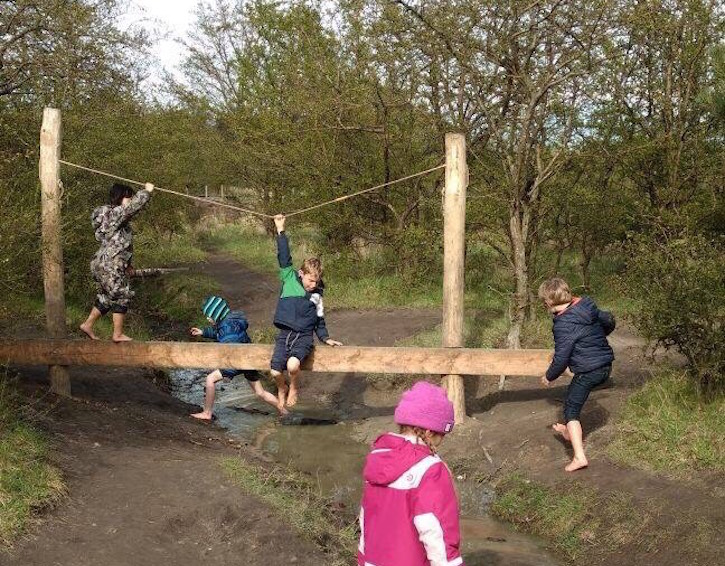
Are you OK with it?
It was a blustery end-of-summer in 2013 when we made our way to the “Pladsanvisningen” – roughly translated to “the placement guide”, a government agency which manages the enrollment lists of Copenhagen’s public kindergartens. Preschool places are assigned according to seniority on the kindergartens’ waiting lists, with the usual sibling trump card disrupting the otherwise straightforward placement equation.
Every child can choose up to three public kindergartens around the neighbourhood; we shortlisted lovely ones with plenty of playground space, which naturally were popular and had waiting lists as long as the “next summer”. A spot, however, was immediately available at kindergarten “Minislottet”. We gasped in anticipation. Were we OK with it?, the lady at the agency asked.
I immediately googled the address of the kindergarten printed on our registration form the moment we stepped out. What?! The address of the kindergarten was 50 minutes outside central Copenhagen! Did the lady misunderstand? Maybe we’d made a mistake with our address!
When we finally got home to regroup, we google-translated the entire registration form word by word and discovered additional peculiar information: There was an “Opsamlingen” address, roughly translated to “collection point”, closer by to where we lived and a number to call.
We were asked to arrive at the collection point the next morning before 8:30am. Pedagogue C. approached us and after the initial introductions, she said, “The bus picks us up at 8:40 and it arrives back here about 4 in the afternoon. We close at 5 so we ask parents to come as early as they can.” She smiled broadly. Shortly after, the children were asked to line up – I grabbed my daughter Sara’s hand quite tightly, unsure which one of us was more nervous. As we filed out of the room, there was a bus waiting, and a stream of 3-to-5-year-olds put their bags in the luggage hold before clambering up the steps of the bus. Head pedagogue E. was at the bus entrance, greeting each child and checking off their names on her list. I spotted a young assistant on the bus, helping to check the children’s seatbelts were securely fastened.
“Welcome to Minislottet! You and Sara can sit at the back of the bus today, but Sara will be given a fixed seat later. All the children have their own seats on the bus so they know where to sit. Otherwise, it will be too crazy!” E. laughed as she shook Sara’s hand.
As I settled myself at the back of the bus, I looked out the window and saw the parents gathering along the sides of the bus, waving goodbye and blowing kisses to their children who were on the bus. And they waved and blew kisses, right up till the bus left. I was to learn that I would become a regular participant of the waving and kissing contingent, this ritual an integral part of my morning routine for the two years to come.

Once the bus was cruising on the highway, E. greeted the children over the PA system and introduced the day’s activities. After she spoke, she put on some sing-along music and stories. An hour later, the bus turned into a clearing and stopped. There was a palpable sense of excitement in the air. The children, most of whom had quieted down, burst to life. I saw them jump off the bus and run through a set of gates.
I couldn’t quite believe what was happening. Was Sara meant to go to a kindergarten an hour away, and then back, every day? Why would any parent do this? When we were in Singapore, we were fortunate to have the childcare centre 10 minutes down the road from where we lived!
Welcome to Minislottet
Forest type preschools in Copenhagen operate under three categories: “udflytterbørnehave”, “skovbus” and “rumlepotte”; the differences revolve around frequency and characteristic of the excursion into the woods.
“Minislottet” – or “Minicastle” – roughly translates to an “outlying kindergarten in an environment with plenty of fresh air”. A castle, it definitely was not. In its place, a shabby-chic, charmingly converted farmhouse, surrounded by a forest and a coast nearby. And as I stepped through the door to the back garden, I discovered the castle’s crown jewels. Minicastle’s back garden was a mini forest itself!
There was a little wardrobe area where the 24 children stored their bags. Some changed into their boots before running out. I almost blurted out “Be careful! Don’t run!” before I realised there had barely been any adult instruction since we arrived. Minicastle had come alive, the children were running around, playing and laughing. Soon after, they were jumping on wooden logs and stumps, climbing up trees, swinging down branches, digging up soil and rustling about in the bushes. I was stunned.

Own time, own target
At Minicastle, the children were allowed to play whatever they wanted, whenever they wanted, however they wanted. Inside the farmhouse, there was a little room where the children could nap but, E. noted, “No, they don’t take naps because the day is too precious to not be playing outside. But they can if they want to. They decide.”
Throughout the day, the pedagogues and assistants arranged a few activities around the wooden tables: storytelling, drawing, colouring, Hama beading…various arts and crafts materials were available for any child who was keen. No activity was “compulsory”.
Lunch was a cold – literally – affair. Sugar-free and organic, there was a healthy spread of brown rye bread with slices of cheese, capsicums, cucumbers, tomatoes, and liver-paste…I stuck to nibbling my organic crispbread. After lunch, it was music and dance – there did not seem to be rules around “letting your stomach rest for half an hour after eating”. And no, it was not the Danish alphabet song nor was it Incy Wincy Spider. That day, the children danced to “Livin’ La Vida Loca” and “Murder on the Dance Floor”.
While many kindergartens these days tout play, Danish kindergartens level up. The emphasis is not merely on play, but free play. The adults at Minicastle were present and watchful, but hands-off — I saw the pedagogues step back, preferring to provide less instruction and to allow the children to plan the day on their own, spending time doing whatever caught their fancy. If they were bored – and E. explained that they were encouraged to be bored – usually they came up with another form of creative play, but some actually did need a break!
To those used to a more structured “educational” approach, this can seem like a free-floating, non-beneficial preschool programme. Ok, I was referring to myself. Undeterred, I asked E. “Can you tell me more about the curriculum?” (expecting a timetable of sorts, 10-10:30 Counting, 1030-11 Danish, etc). “Oh, no, no, don’t worry,” E. assured me, “There is no teaching in Danish kindergartens. We will make sure the children get as much play as possible.”
“There are only two timings the children need to pay attention to: when it’s time to eat – snack and lunch; and time to get back on the bus. We don’t want to leave any child behind at Minislottet. We try to count them before we return.” She laughed heartily.

Outdoor risky play
A hallmark of Danish forest kindergartens is children spending all day outdoors – come rain, sleet, wind, snow or sunshine. And that’s where the Danish mantra, “Der findes intet der hedder dårligt vejr, kun dårligt påklædning” – “There’s no such thing as bad weather, only bad clothing” – kicks into high gear. The concept was foreign to me. Back in Singapore, the slightest drop of rain immediately elicited a “Let’s go in!” response. I grew up half suspecting that getting my head caught in the rain would result in a headache.
Contrast this with my conversation with Sara, a few weeks into Minicastle:
“Oh no, was it raining heavily at Minislottet today? Did you guys stay outside again?”
“Yessss! It was sooo fun! We got to splash in muddy puddles!!!”
(It wasn’t “sooo fun” washing Sara’s clothes that weekend, but it was my struggle on a daily basis given she would return with boots full of sand, pockets full of leaves, her bag filled with stones and soil…but I’ll leave that sorry tale of misery and despair for another time.)
We surely know that spending time outdoors is great for children: They have better concentration, they are more creative and more mobile. They are also more social — children learn how to play with their peers, because playing outdoors almost compels one to want to play with others, to socialise, unlike, say, a colouring or drawing activity. Simply put, playing outdoors makes children happier.
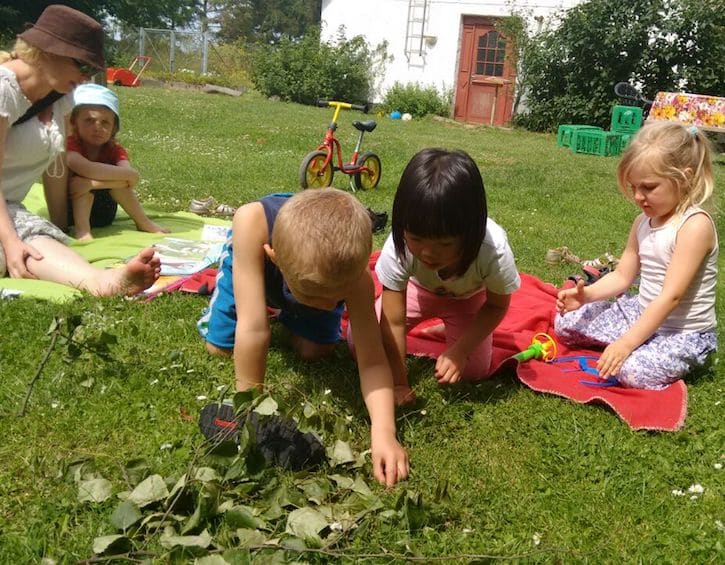
Playing outdoors is also perceived as a natural form of risky play, where children play to experience their surrounding environment. Children are natural explorers, and as I witnessed the children having the freedom to explore and discover Minicastle, I realised why the parents had bought into that daily 2-hour journey on a bus. It was a space that nurtured the children’s thirst for adventure, freedom and independence.
Read more: How risk taking fosters grit and resilience
Because risky play is encouraged, minor injuries are almost expected. Sara routinely came home with tiny scratches on her hands and little bruises on her legs. But, E. assured me that they acknowledged a huge distinction between getting hurt and seriously hurt — bruises were par for the course when playing outdoors; a broken arm was serious.
As much as they could, the pedagogues did not say “No, don’t do that.”: they did not overcorrect, nor did they take over a task which a child might have overreached and was struggling with, nor did they barricade out-of-bounds danger zones. If there was one philosophy that ran through the Danish childcare system, it was the spirit of freedom and independence. What they did was outline the risks and dangers the children needed to be aware of. They tried to teach the children to assess the environment, to recognize if an activity could potentially be dangerous and to navigate the situation safely.
Whether the children balanced on mossy, slippery rocks, jumped across fallen trees, skipped over wildly protruding roots, swung across branches, helped start a bonfire (a real winner, this one), touched suspicious-looking mushrooms, either at Minicastle or out in the forest, risky play enabled them to recognise their personal limitations and challenge themselves appropriately, trusting their instincts.

It all evens out
Safety concerns aside, Danish forest kindergartens face criticism about their academic value in today’s world. Get real, right? Shouldn’t preschools prepare children for a solid start to formal education? In the early months, my mom would ask me, “If Sara is just playing outside all day, what is she learning?” Absolutely reasonable. Sara was missing out on important literacy training, and traditional educational views argue that reading and writing during the early years build the foundations for formal school learning.
I struggled. My husband took to the Danish approach like a fish to water. He never doubted; I felt insecure, each trip home was invariably met with situations where well-meaning family and friends would ask Sara to recite the alphabet, if she could spell “apple, bee, and cat” (she couldn’t), and if she could add 2 and 2 (wasn’t happening, either).
But the insecurity faded, over time. I learnt more about the Danish culture and pedagogy, and how the Danish approach contrasted with my own experience. And I came to accept and appreciate how Danish kindergartens trusted the children to construct their own learning, especially through unstructured play, encouraging them to develop self-confidence and a sense of autonomy.
As pedagogue H. wisely noted on Sara’s last day at Minicastle, there was a lifetime to be had of studying and working…and that was why the pedagogues took “child’s play” so seriously. The Danes believe that play gives children vital skills in how to learn. When engaged in an activity they enjoy, whether roleplaying or building a treehouse, children become motivated to constantly refine and improve the activity, to increase its creativity and complexity. Psychologically, it is obvious how play helps children become powerful learners.
Sara and her friends used this freedom to create storylines to transform Minicastle. They imagined themselves as wild animals one day, pets another, jungle children on yet another. Through the opportunity to design their own games and worlds, they followed their instincts to discover and construct. And they were provided with the space and time, to go through this iterative process, until they were ready to move on.
To be sure, when Sara started formal education, she lagged behind her Singaporean peers where academic “goals” were concerned. And she probably still does. But I would like to think we gave her an opportunity to learn life lessons she wouldn’t find elsewhere, and a chance to learn what she was capable of.
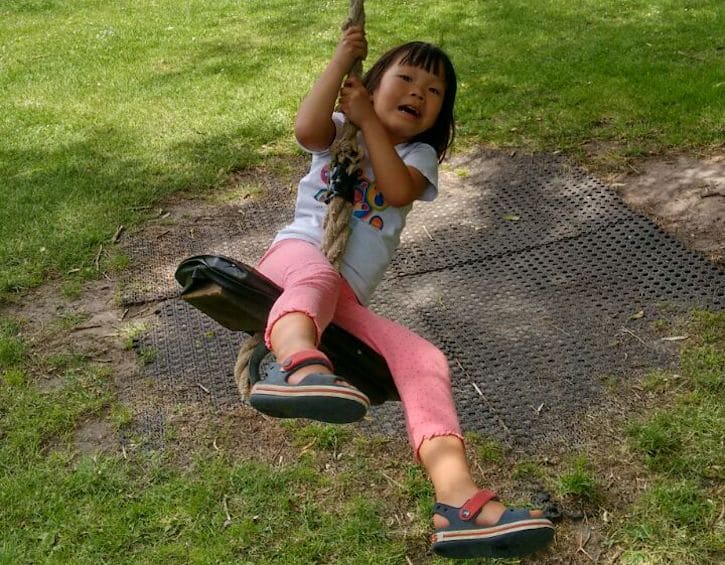
This is how they do it
Across Denmark, “pedagogues” are the main workers in nurseries and other childcare settings. Buttressed by the notion of “child-centeredness” (not to be confused with “child-centered parenting”), the Danish pedagogue is meant to acknowledge and appreciate each child’s personality, temperament and developmental path. And the pedagogue is responsible for creating an environment that accommodates and respects these differences. The focus is not on traditional preschool curriculum such as learning to read or write or spell; it is on developing the child’s emotional, social and cognitive senses. Developing the child’s well-being is favoured over learning, care prioritised over teaching.
Understanding and embracing the Danish approach from Sara’s pedagogues was a steep learning curve for me, but such a precious and priceless experience: frustrating yet fascinating, exhausting yet enlightening. Here are two memories which stood out:
/Say sorry!
Out of the blue, over dinner, Sara told us that she hit a girl (M) with a branch at Minicastle. I was shocked. Why did she do it? Another girl (N) asked her to, because they did not want to play with M. My husband and I were shocked at Sara’s bullying behaviour, and although we were furious, we faked our best zen-millenial-parenting by asking her, as evenly as possible, to explain herself. She was not even 4 then, and I could see she was struggling to find the right words. Tears started streaming down her face.
The next day, I was ready to approach M. and her parents, and to make Sara apologise, failing which I would do the talking. M.’s parents were not at the collection point, but I spotted pedagogue E. I decided to get the low-down on the fracas.
“Sara hit M.? No, I don’t know about it. If it is serious, we would definitely know. But Sara has never hit any one, we have never seen her hit.”
“Oh, really? That’s strange… I was hoping that you had gotten Sara to apologise, too.”
“No, there was no such thing. We NEVER [yes, she raised her voice for emphasis] make the children say sorry. Being sorry needs to come from the heart and the children must understand why they are apologising. If an action is intentional, a sorry is meaningless. It is said only to please the adults. When a child hits someone, we always ask and try to understand why the child does it, and we try to solve the problem. We can teach the child that hitting is not the solution.”
“Ohh…OK…I was actually planning to speak to M.’s parents…”
“No, you don’t have to. This is nothing at all. If something serious happened, we would know and we would tell the parents. No, you don’t have to speak to them at all.”
I was speechless. Notwithstanding the fact my daughter had presumably lived in a parallel universe, what was this ‘we do not make the child say sorry’ approach? Where is that parenting manual again?
//It’s OK to be shy
Sara was an extremely shy tot. After 18 months at her childcare in Singapore, dropping her off in the mornings without tears was still a hit-and-miss affair. The teachers and especially the aunties at the childcare often nagged us, in front of Sara, about how shy she was – “Aiyoh, why still so shy?”, “Don’t be shy!” – and how we needed to expose her to more strangers and new situations. Each time they raised the issue, I felt a little something in Sara curl up and withdraw further.
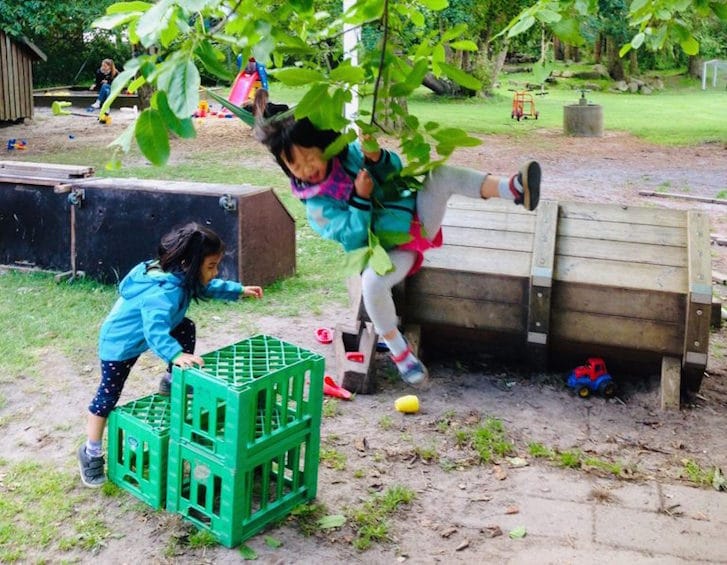
The decision to move to Copenhagen and place Sara in a local kindergarten – foreign country, language, warts and all – was mulled over ad nauseum. We expected it would be challenging, but we thought a fresh environment could also be helpful. I prepared myself for how the pedagogues would respond to Sara’s shyness, unsure if we were going to face the same reaction or worse.
I remember the first time I encountered their response. In the first few months at Minicastle, Sara was particularly shy at the collection point – she often hid behind my back. That morning, after we greeted pedagogue L., he said, “It’s OK to be shy!”. It was a simple sentence, but it caught me off-guard. I was expecting the usual, “Oh, you don’t have to be shy…”. For me, it showed a complete acknowledgement and acceptance of who Sara was.
During Sara’s first year at Minicastle, we witnessed her transformation – she was blossoming, and starting to come out of her shell. Dropping her off in the mornings was a joy. She was speaking Danish and playing a lot with the other children. But, she remained shy towards the pedagogues and assistants. In fact, she was so shy towards most adults that each time one spoke to her, she would freeze up and not be able to respond.
We asked pedagogue E. a few times, if there was anything else we could do. We felt helpless. E. insisted we say nothing of it at all to Sara, to avoid making an issue out of it. At Minicastle, Sara had found a way of getting through to the pedagogues without having to speak to one directly – she always asked a friend to help relay her messages. Because Sara was still able to communicate with the adults, E. was assured that Sara was always able to get help or be comforted at Minicastle. Those were E.’s main concerns.
She thoughtfully noted to me, “I’m confident that the switch will flick one day. At their age, I would be more concerned if Sara only spoke to the adults and not to the other children. Because she is doing well socially with her friends, I don’t think there is an issue.” What a perspective. And she reiterated what I had heard before, “It is completely OK to be shy. We love having shy children come to Minislottet!” Here recognition and acceptance of the child shook me greatly. Because deep down, I had been grappling with recognising and accepting Sara’s shyness.
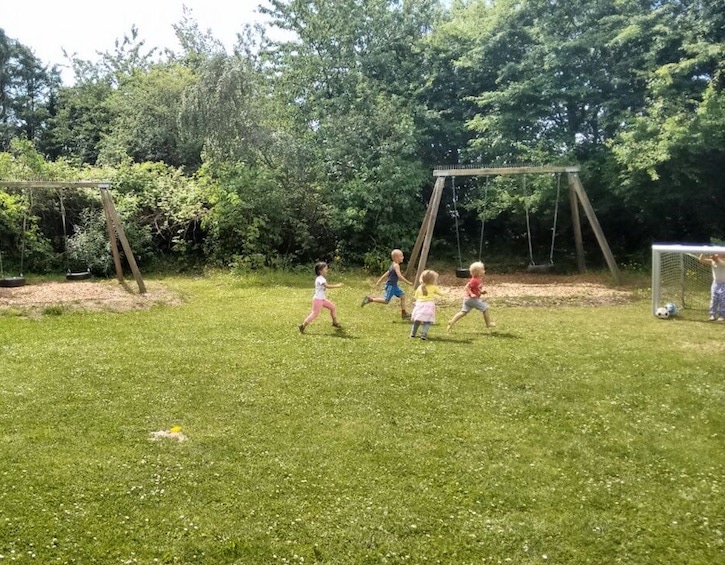
Final thoughts
In Denmark, childhood is a magical period of time, filled with sounds of laughter and play. It is not rushed — figuratively and literally. In the early days, I would “rush” Sara back home after picking her up; “Put on your jacket, let’s go!” I remember almost speed-walking with the stroller. It was too natural for me to focus on getting from point A to point B. Over time, I realised that the Danes look at a child’s life differently. Parents stopped and let their children wander a bit, checking out a flower or two by the sidewalk, or stopping to feed the ducks by the canals.
Children are genuinely given space, and time to “stop and smell the roses” when growing up, instead of racing to check off a list of academic goals. I believe this view of childhood can exist partly, or, dare I say mostly, because there is no looming pressure of having to be able to read, write, and spell when they start formal schooling; there are no “streaming” exercises because the focus is on acquiring knowledge and experiencing the joy of learning, not getting a good grade. There are no high-stakes standardised examinations to get through when they reach 12.
A simplistic analysis, maybe. But sometimes, the most effective solutions are the most obvious.
Read more: Hygge, Homework and Empathy: A Singaporean Mama’s Take on Danish Education




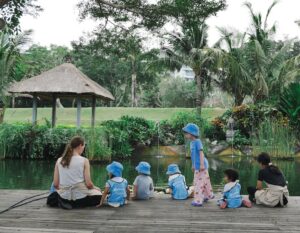

 View All
View All




 View All
View All

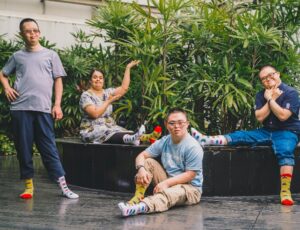
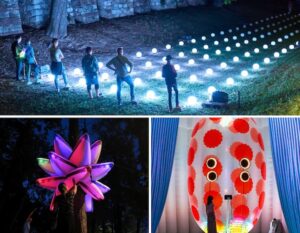


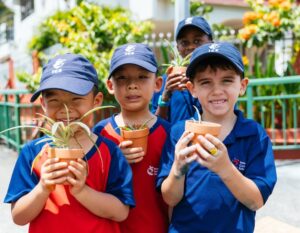

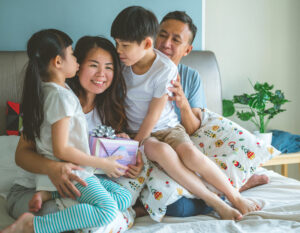

 View All
View All



